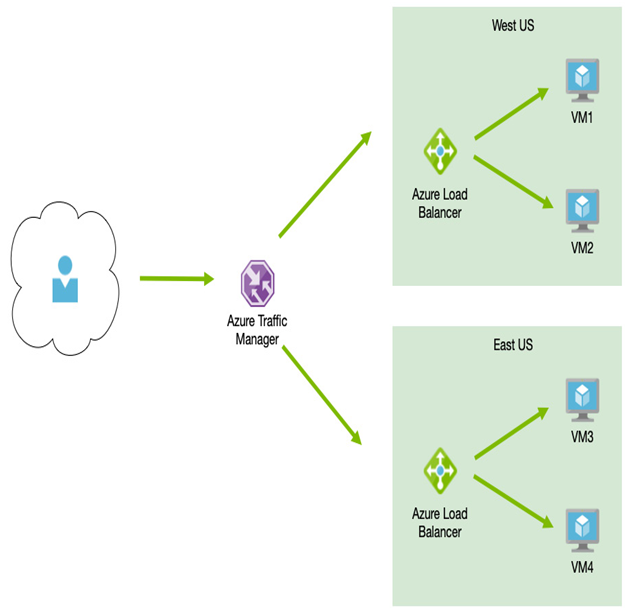Categories
Archives
- September 2024
- August 2024
- July 2024
- June 2024
- April 2024
- March 2024
- January 2024
- December 2023
- October 2023
- September 2023
- August 2023
- July 2023
- May 2023
- April 2023
- February 2023
- January 2023
- November 2022
- October 2022
- September 2022
- July 2022
- May 2022
- April 2022
- February 2022
- January 2022
- December 2021
- November 2021
- September 2021
- August 2021
- July 2021
Each of the four load balancing options has its own use cases. Therefore, you can use the following flow chart to determine which to use based on your requirements:

Figure 8.19 – Choosing the right load balancer
As you can see, on some occasions it makes sense to combine one or more options to meet your needs. One example may be when your application needs to be redundant and scalable within a region and across regions – as we can see in the following diagram, we can combine both Azure Traffic Manager and Azure Load Balancer in this scenario:

Figure 8.20 – Combining Traffic Manager and Load Balancer
As with most architectural decisions, no one rule or pattern will suit all scenarios, and the mix of technologies and options you need will be entirely dependent on your specific requirements.
Summary
This chapter has looked at many different options and configurations for ensuring connectivity across Azure and hybrid scenarios. We examined how to use public and private DNS in Azure and how we can then control inbound and outbound access using a combination of NSGs, ASGs, and Azure Firewalls.
We have seen how user-defined routes can help us strictly manage traffic flow to support different requirements. Finally, we looked at how to use other Azure services such as Azure Load Balancer, Traffic Manager, Application Gateway, and Azure Front Door to spread traffic over services for better resilience and performance.
In the next chapter, we will look in detail at the different storage options available for use in Azure, including the types of storage, how we can secure our data on it, and what tools we can use to manage it.
Exam scenario
The solutions to the exam scenarios can be found at the end of this book.
MegaCorp Inc. wants to start migrating several on-premises applications into Azure. They want a hybrid configuration whereby VMs in Azure can connect to services on-premises and vice versa.
Any connection into Azure must be resilient, private, and stable with guaranteed throughput.
All VMs in Azure must route any internet-bound traffic through a central firewall to have complete control.
Suggest a solution that achieves these requirements. You need to consider the best connectivity options, how DNS resolution will work, and what sort of firewalls and NSGs you may need.

Leave a Reply